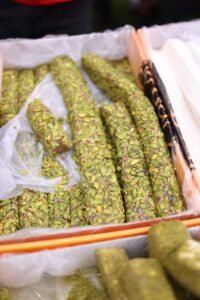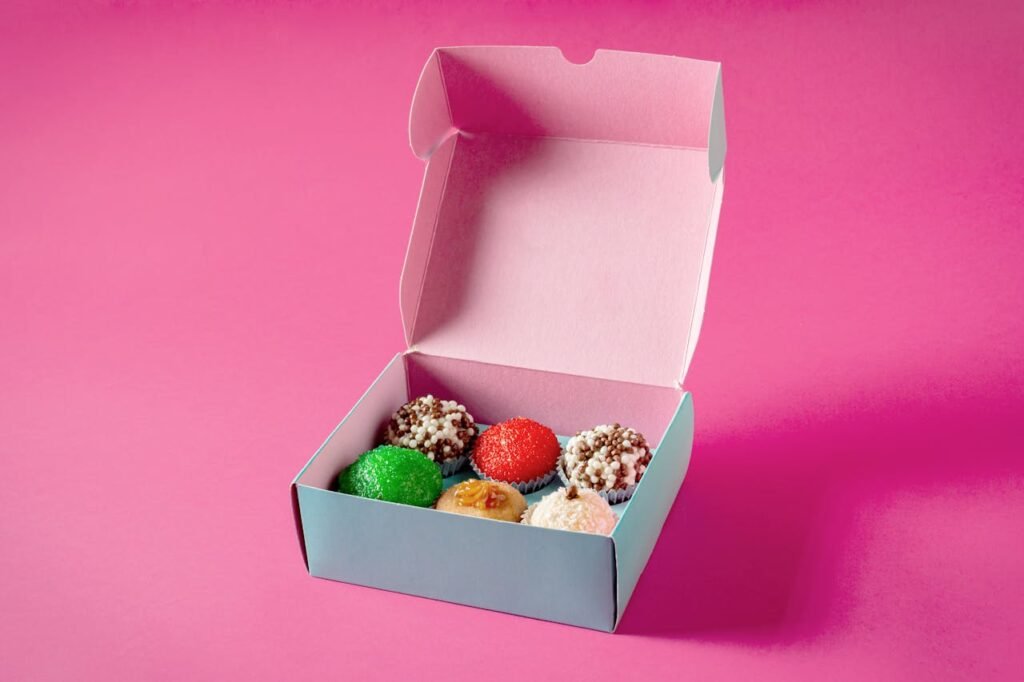A sweet box is more than just a container; it’s a presentation of delight, designed to hold and display a variety of confections. Typically crafted from sturdy materials like cardboard, plastic, or even wood, sweet boxes are often adorned with intricate designs, brand logos, and vibrant colors to enhance the visual appeal of the treats inside.
A quality sweet box is characterized by its durability, aesthetic appeal, and functionality. It should be sturdy enough to support the sweets without collapsing, and ideally, it features compartments to keep different types of sweets separate, maintaining their freshness and integrity. The materials used must be food-safe to ensure that the contents remain uncontaminated.
In addition to their practical uses, sweet boxes are often chosen for their ability to convey a message, whether for festive occasions, personal gifts, or brand promotion. Customization options allow for personal touches, making them perfect for weddings, holidays, or corporate events.
Sweet boxes can be found in various places, including online retailers, local packaging stores, and specialty sweet shops. They range from simple, budget-friendly designs to luxurious, handcrafted options that add an extra layer of elegance to the sweets they carry. With the growing emphasis on sustainability, many manufacturers now offer eco-friendly sweet boxes made from recyclable or biodegradable materials, catering to environmentally conscious consumers.
Ultimately, a sweet box serves as the first impression of the treats it contains, making it a crucial element in the presentation and enjoyment of sweets.
Let me give you all straight about sweet box-
1. How a Sweet Box is Made
Material Selection:
- Cardboard/Paperboard: Most sweet boxes are made from high-quality cardboard or paperboard, which is sturdy and can be easily printed on. For premium boxes, materials like kraft paper or coated paper are used for added durability and aesthetics.
- Plastic: Some sweet boxes, especially those designed for display purposes, are made of clear plastic to showcase the contents.
- Wood or Metal: For luxury or gift purposes, sweet boxes may be made from wood or metal, offering a more elegant presentation.
Design and Structure:
- Box Shape: Sweet boxes come in various shapes, including rectangular, square, circular, or custom shapes. The choice of shape depends on the type of sweets being packed and the desired presentation.
- Compartments: Some sweet boxes have multiple compartments to separate different types of sweets, keeping them fresh and preventing mixing of flavors.
- Lid Type: Sweet boxes may have flip-top lids, slide-out drawers, or removable lids. The lid type can enhance the user experience and protect the contents.
Printing and Decoration:
- Branding: Sweet boxes are often printed with brand logos, names, and other branding elements. High-quality printing techniques like offset printing, UV printing, and foil stamping are used.
- Design Elements: Decorative elements such as embossing, debossing, spot UV, and lamination are often added to enhance the visual appeal of the box.
- Window Cutouts: Some sweet boxes feature window cutouts covered with clear plastic to display the sweets inside.
Assembly:
- Folding and Gluing: For cardboard boxes, the material is die-cut, folded, and glued to form the box structure. Pre-scored lines make folding easier and ensure a clean finish.
- Manual or Automated Production: Depending on the scale of production, sweet boxes may be assembled manually or using automated machinery.

2. Attributes of a Quality Sweet Box
- Sturdiness: A quality sweet box should be made from durable materials that can support the weight of the sweets without collapsing.
- Aesthetic Appeal: The box should be visually appealing, with high-quality printing and design that reflects the brand or occasion.
- Food-Safe Materials: The materials used should be food-safe, ensuring that the sweets remain fresh and uncontaminated.
- Good Sealing: The box should have a secure closure system, whether it’s a magnetic flap, ribbon tie, or tight-fitting lid, to keep the sweets fresh and protected.
- Compartmentalization: For assortments of sweets, a quality box should have well-designed compartments to keep different flavors separate.
- Ease of Opening: The box should be easy to open and close, providing a good user experience without damaging the packaging.
- Customizability: High-quality sweet boxes can often be customized for events, holidays, or branding, adding a personal or festive touch.
3. Where to Find Sweet Boxes
- Online Retailers: Websites like Amazon, Etsy, and specialized packaging retailers offer a wide range of sweet boxes, from simple designs to luxury options. Many allow for customization.
- Local Packaging Stores: Packaging stores in your area may offer various sweet boxes, particularly those used for commercial purposes or events.
- Sweet Shops and Bakeries: Some sweet shops and bakeries sell sweet boxes directly, often designed specifically for the sweets they sell. These can be purchased separately or with sweets.
- Wholesale Markets: For bulk purchases, wholesale markets that specialize in packaging materials often have a variety of sweet boxes at competitive prices.
- Custom Packaging Services: For unique or branded designs, custom packaging services can create bespoke sweet boxes to your specifications, often with options for different materials, sizes, and designs.

4. Additional Considerations
- Eco-Friendliness: With growing environmental concerns, many manufacturers offer sweet boxes made from recyclable or biodegradable materials. If sustainability is important to you, look for boxes with eco-friendly certifications.
- Size and Capacity: Consider the size and capacity of the sweet box based on the quantity and type of sweets you intend to pack. It’s essential to choose a box that fits the contents well without being too tight or too loose.
- Price Range: Prices for sweet boxes can vary widely based on materials, design, and customization. Simple cardboard boxes may be inexpensive, while luxury boxes made of wood or with intricate designs may be more costly.
By learning all these aspects of sweet boxes, you can choose the right one that meets your needs, whether for personal use, gifting, or commercial purposes.

